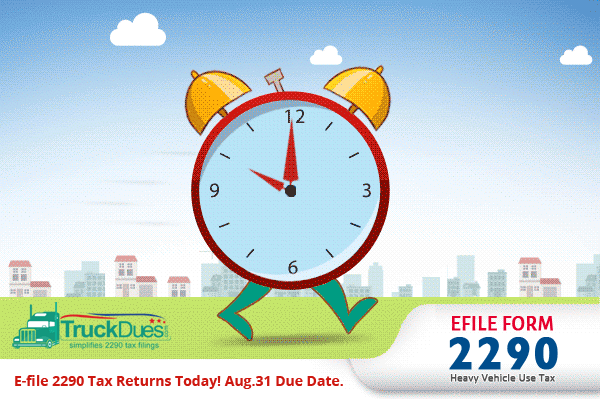 Freedom was never free! We live in a Free Country now. Amidst of our commitment clogged life & busy schedules we must take a moment to recognize the hard work and dedication of our American veterans on observance of Armistice Day. Our Veterans old and young alike, wore physical and mental scars of combat for one reason that is for us to have a Safer Life. After serving our country so honorably, many of our war heroes feel a sense of duty to continue to give back to the land they love and have fought so hard to protect. Continue reading
Freedom was never free! We live in a Free Country now. Amidst of our commitment clogged life & busy schedules we must take a moment to recognize the hard work and dedication of our American veterans on observance of Armistice Day. Our Veterans old and young alike, wore physical and mental scars of combat for one reason that is for us to have a Safer Life. After serving our country so honorably, many of our war heroes feel a sense of duty to continue to give back to the land they love and have fought so hard to protect. Continue reading
Last Minute Halloween Partying, That’s alright. But No Last Minute Tax Filing!
It’s that time of year again when pumpkins, skeletons, ghosts, and cobwebs decorate businesses and homes alike. Yes!!! Halloween is nearly away, It’s Time to play ‘trick-or-treat & celebrate among your family, friends & coworkers. If not attend county community events. Still bored of playing outside, well stay at home watch horror movies; tell a Real Life Horror Story, Hold costume parties at home & so on.
Having said that, Halloween is not an official holiday. Government offices and businesses are open as usual and public transit services run on regular schedules. So the IRS never makes any exceptions to negate any penalties incurred in case of failure to File or Pay your taxes before the deadline. Continue reading
Avoid Procrastination! Don’t let the Tax Deadline Impede your Halloween Celebration
Yeah!!! Halloween is nearly upon us & No body prefers an interruption while having a good time during Halloween being on gaudy-spooky outfit, carving pumpkins, going on a party crawl, passing out candy & Creepy Chocolate Chip Cookies to the kids & so on. But did you know that October 31 (Halloween 2016) is also going to be the deadline to file your HVUT’s for the vehicles that began operation during September 2016. There is no shame in being too old for trick-or-treating cause it ain’t gonna cost you money, but you don’t have to be late on your tax filing where it costs your hard earned money.
So don’t hold up until the month end to be a last moment filer, just spare few minutes to answer few simple questions on TruckDues.com to have your taxes e- filed & approved by the IRS instantly. TruckDues.com being an IRS authorized e-file service provider is well known across the nation for its reliability and customer friendliness, Never consumes your Time & Money as E-filing begins @ just $7.99. Continue reading
Are you a Paid Preparer for IRS Form 2290, HVUT?
 Are you a paid preparer helping the truckers in reporting IRS Form 2290 for federal heavy highway vehicle use tax returns? We’re here to help you with a simplified, full-fledged and easy to use Form 2290, HVUT related tax preparation and online filing website for your needs.
Are you a paid preparer helping the truckers in reporting IRS Form 2290 for federal heavy highway vehicle use tax returns? We’re here to help you with a simplified, full-fledged and easy to use Form 2290, HVUT related tax preparation and online filing website for your needs.
We’re already serving thousands of happy truckers to e-file 2290 truck tax returns with IRS and looking forward to reach out to more truckers and paid preparers welcoming them to this sophisticated, more enhanced 2290 e-file website to explore electronic filing benefits.
E-file 2290 tax returns easily!
Form 2290 is an annual return filed with the IRS for all the heavy vehicles operated on public highways with taxable gross weight of 55,000 lbs or more. Truckers and truck operators under whose name the vehicle is registered liable to file and pay this 2290 vehicle use tax. Form 2290 and Schedule-1 must be filed with the IRS between July of this year to June of successive year or when the vehicle is first put to use on a public highway within in a tax period. Continue reading
Missed Aug. 31 Deadline? You can still report 2290 taxes online!
The heavy vehicle use tax returns (Form 2290 and Schedule-1) is due if you have put your vehicle on road after July. Form 2290 must be filed for the month the taxable vehicle is first used on public highways during the current period, beginning on July 1, 2016, and ending on June 30, 2017. However if you have missed to report your 2290 taxes by Aug. 31. e-file it today and receive your Schedule 1 proof copy immediately once IRS completes processing your tax return. Pay the 2290 taxes you owe as soon as you can to minimize the interest and penalty charges.
Electronic filing is required for each return reporting 25 or more vehicles. However, all truckers are encouraged to file 2290s electronically. Electronic filing generally allows for quicker processing of your 2290 truck tax returns. E-file is simple and quick. It is more secured and much convenient, more over it is inexpensive. You no need to reach IRS office downtown and stand in line to pay your taxes, file it electronically and schedule your payment through EFW or EFTPS
E-file 2290 truck tax returns at just $7.99. You know what? truckers prefer to file 2290s electronically as they could save big on the filing expenses and receive Schedule-1 receipt immediately.
Less than 24 hours to complete your 2290 Truck Taxes…
Attention Heavy Highway Truckers, you just have less than 24 hours to complete your 2290 truck tax returns with IRS. E-file would be the smart move, choose e-file and complete it online with the IRS. Stamped Schedule-1 proof will be available in just minutes.
Form 2290 e-file is just $7.99 for a single truck and affordable for all truckers, we along with IRS encourage every trucker who needs to file 2290 returns to choose electronic filing as it is faster and secured. When you choose to file your 2290 tax returns online you could receive your stamped Schedule-1 proof as earlier as IRS accepts your returns and share it across. Continue reading
2 days to go for Truck Tax Form 2290 Due Date.
It’s that time of the year again when you have to file your Federal Heavy Vehicle Use Tax returns on IRS Tax Form 2290. While the process may be tedious but that doesn’t mean it is not important, no worries as such http://TruckDues.com has simplified and made this Truck Tax Form 2290 reporting simple, quick and affordable.
Taxes get a bad rep with truckers and truck owners for being difficult and time consuming. So much so that many of them fail to see the influence they actually have on their business and taxes if they just plan ahead. Form 2290 is a tax paid for highway vehicle use and which in return paid back for new highway laying, repair and maintenance works.
Heavy Highway Vehicle Use Tax
Truckers are familiar with the federal highway use tax for heavy motor vehicles, also known as the HUT (Highway Use Tax) or HVUT (Heavy Vehicle Use Tax). Generally this tax is reported on form 2290 for tax taxable vehicles and other trucks used since July, and its due on August 31 of each tax period. Anyone who registers a heavy highway motor vehicle in their name with a taxable gross weight of 55,000 pounds or more must file Form 2290, Heavy Highway Vehicle Use Tax Return.
Filing Deadlines
The filing season for Form 2290 filers is July 1 through June 30. You must file Form 2290 for the month you first use the taxable vehicle on public highways during the reporting period.
- For vehicles you first use on a public highway in July, file Form 2290 between July 1 and August 31.
- For vehicles you first use on a public highway after July, the tax for the current filing season will be prorated. File Form 2290 by the last day of the month following the month in which you first used on a public highway.
Why are we offering form 2290 efile for cheap and at a low cost?
Are you wondering why are we offering form 2290 efile for cheap and at a low cost? There is surely a purpose to be served. We know the hard work you do, we know the struggles you face on road and we are well aware how things are when the climate does not support you. Despite of the hardship, you file your tax 2290 return to the IRS as token of respect. It becomes tedious if paper filing was the method you choose to report and file form 2290. Instead, file your return online, pay a very low fee to TruckDues and receive your schedule 1 copy, right there in just minutes. Additionally, you are allowed to enjoy the features designed in the application, through your desktop and mobile with utmost ease.
If you still think, filing form 2290 is a tedious role to handle and wish never had to pay tax, kill the feel. TruckDues.com is one shop-stop service provider, allowing you to deal with filing fee with ease. Just $7.99 per filing and schedule 1 copy would be made available immediately when the IRS completes processing your 2290 tax return.
2290 Tax Dead Line is Fast Approaching!
The federal heavy vehicle use tax form 2290 is due and the dead line is fast approaching… mark your calendar August 31 is the last date to complete reporting and paying your 2290 truck taxes.
August 31, 2016 is Wednesday, your highway heavy truck tax form 2290 return would be due that day. Sometimes you just can’t get everything ready to file taxes by the deadline. So keep things ready well in advance and file your returns accordingly to allow some extra space to correct mistakes if any at the last minute.
kick-off 2290 tax filing, Aug 31 is the Last Date!
The federal heavy vehicle use taxes are annual taxes must be filed between July and August of the tax year. Mark your calendar! The regular 2290 truck tax return filing deadline is August 31, falls on Wednesday, file your returns well within the due date to get your heavy vehicles registered with the state’s and motor vehicle authorities on time. Most truckers must file their 2290 heavy vehicle use taxes for the tax year 2016-17 by August 31, 2016. IRS must have received your return electronically – or it must be delivered or postmarked – by that date. If you owe tax, you must pay by August 31, even if you file your return later.
If you owe taxes on your heavy vehicle use and you file or efile late without getting a tax extension, the IRS will generally charge penalties based on the amount you owe. There are also penalties for paying your 2290 taxes late, even if you got an extension. However, the late filing penalties are more severe, so you should try to file your 2290 truck tax returns on time even if you owe taxes and can’t pay. Continue reading
Few days left for your 2290 tax filing due date
The Truck Tax Form 2290 return and Schedule-1 are already due and up for renewal, just few days left for your due date. Filing your 2290 truck taxes at the right time is more important as it create some extra space to correct and amend your returns when you get something odd in it. For vehicles first used on a public highway during July, file Form 2290 and pay the appropriate tax between July 1 and Aug. 31.
What may go wrong in your 2290 tax return? Continue reading





